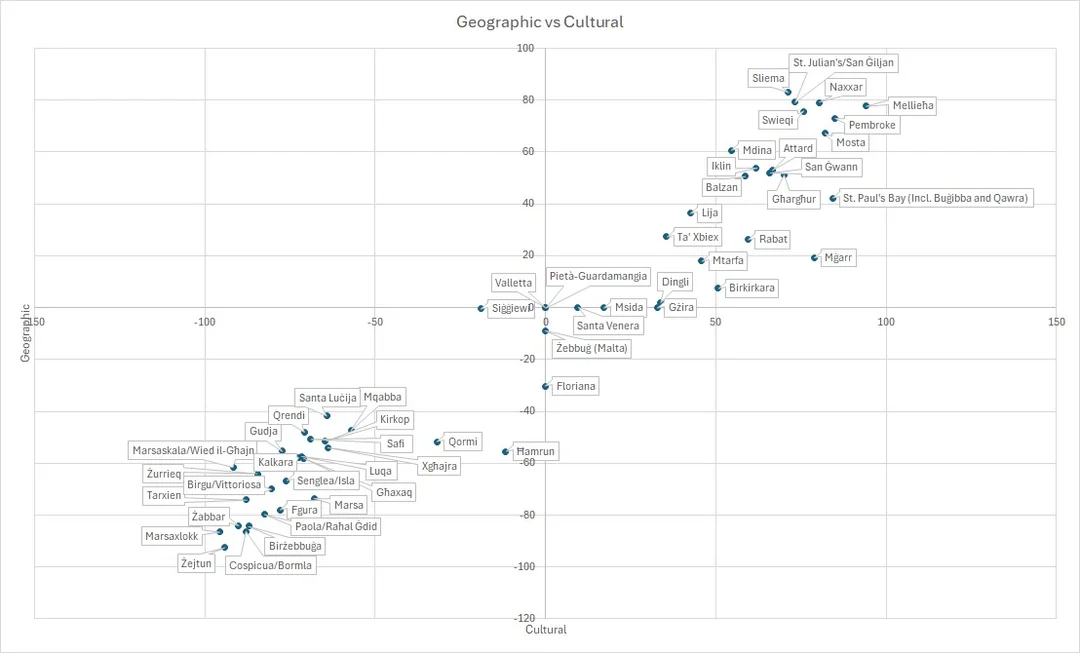Malta may be small in size, but the way its regions are understood, both culturally and officially, shapes how people live, work, and choose their homes. From the fishing villages of the South to the cosmopolitan North and the timeless charm of Gozo, Malta’s regions tell the story of a country rich in contrasts.
This guide explains the different ways Malta’s regions are divided:
- Local perspective: how Maltese people casually split the island into North, South, Central, and Gozo.
- Official perspective: the six government recognised regions, Northern, Southern, Western, Eastern, Port, and Gozo.
- Why this matters: property markets, culture, and lifestyles vary depending on how you view the island.
Local Perspectives: North, South, Central, and Gozo
A recent survey on Reddit showed how Maltese residents see the island in simple terms: North vs South, with Central and Gozo often being considered on their own. These mental maps matter because they reflect cultural divides, lifestyle preferences, and even political leanings.
The North
The “North” is often associated with Malta’s tourist hotspots and modern residential zones. Towns like St. Paul’s Bay, Mellieħa, Naxxar, and Sliema offer a mix of seafront apartments, holiday rentals, and suburban homes.
- Lifestyle: Vibrant, busy, popular with expats.
- Property: High demand for apartments, especially near the coast.
Explore North Malta properties.
The Central Region
Locals often see towns like Birkirkara, Mosta, Attard, and Balzan as the “heart of the island.” It is where many Maltese families live, balancing accessibility with community life.
- Lifestyle: Close to everything, with strong local character.
- Property: Terraced houses and maisonettes remain popular, though apartments are increasingly common.
Explore Central Malta properties.
The South
The “South” carries a deep sense of tradition. Areas like Marsaskala, Birżebbuġa, Żejtun, and Paola are known for fishing villages, family-owned businesses, and historic towns.
- Lifestyle: More relaxed, less commercialised than the North.
- Property: Generally more affordable, with strong interest from locals looking for value.
Explore South Malta properties.
Gozo
Gozo, Malta’s sister island, is always considered a category of its own. Known for its slower pace of life, natural landscapes, and charming villages like Victoria, Xagħra, and Xlendi, it is highly attractive for second homes.
- Lifestyle: Rural, quiet, ideal for those seeking calm.
- Property: Farmhouses, villas, and village apartments dominate the market.
Explore Gozo properties.
Official Administrative Regions of Malta
While locals lean on cultural divisions, Malta is officially divided into six administrative regions (since 2021):
- Northern Region – Includes Mellieħa, St. Paul’s Bay, and Naxxar. Known for beaches, countryside, and modern developments.
- Southern Region – Covers Marsaxlokk, Birżebbuġa, Żejtun, and surrounds. Strong working-class identity, rich in history.
- Western Region – Includes Rabat, Dingli, Siġġiewi. Rural and traditional, with open countryside.
- Eastern Region – Includes towns like Sliema, Gżira, and Msida. Highly urbanised, with strong rental demand.
- Port Region – Centred on Valletta and the Grand Harbour towns (Senglea, Vittoriosa, Cospicua). Rich in heritage and architecture.
- Gozo Region – Malta’s sister island, with distinct governance and character.
These divisions are important for political representation, planning, and statistics, but they also show how diverse the island is, even in its small size.
Why Understanding Regions Matters for Property
For anyone looking to buy or rent in Malta, knowing these different perspectives is crucial:
- Cultural fit: A family from the South might prefer staying close to their community roots, while expats often gravitate toward the North or East.
- Investment value: The Port and North regions tend to have higher property values, while the South offers more affordable opportunities.
- Lifestyle choice: Whether you want vibrant nightlife, historic charm, or countryside peace, the regions highlight Malta’s variety.
Final Thoughts
Malta’s regions can be seen through two lenses: the cultural, everyday map used by locals and the official government divisions. Both are valuable, and both shape how people live and how property markets evolve.
By exploring property in North, South, Central, and Gozo, you are not just filtering by geography, you are choosing a lifestyle rooted in Malta’s unique identity.
